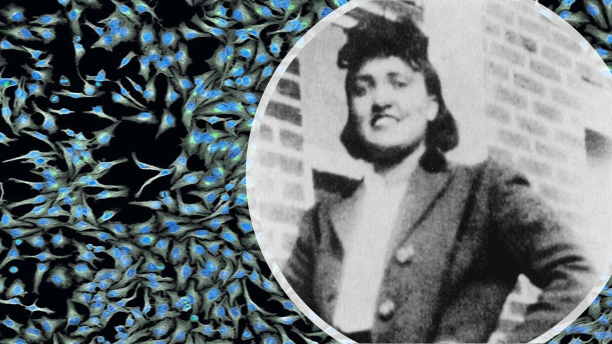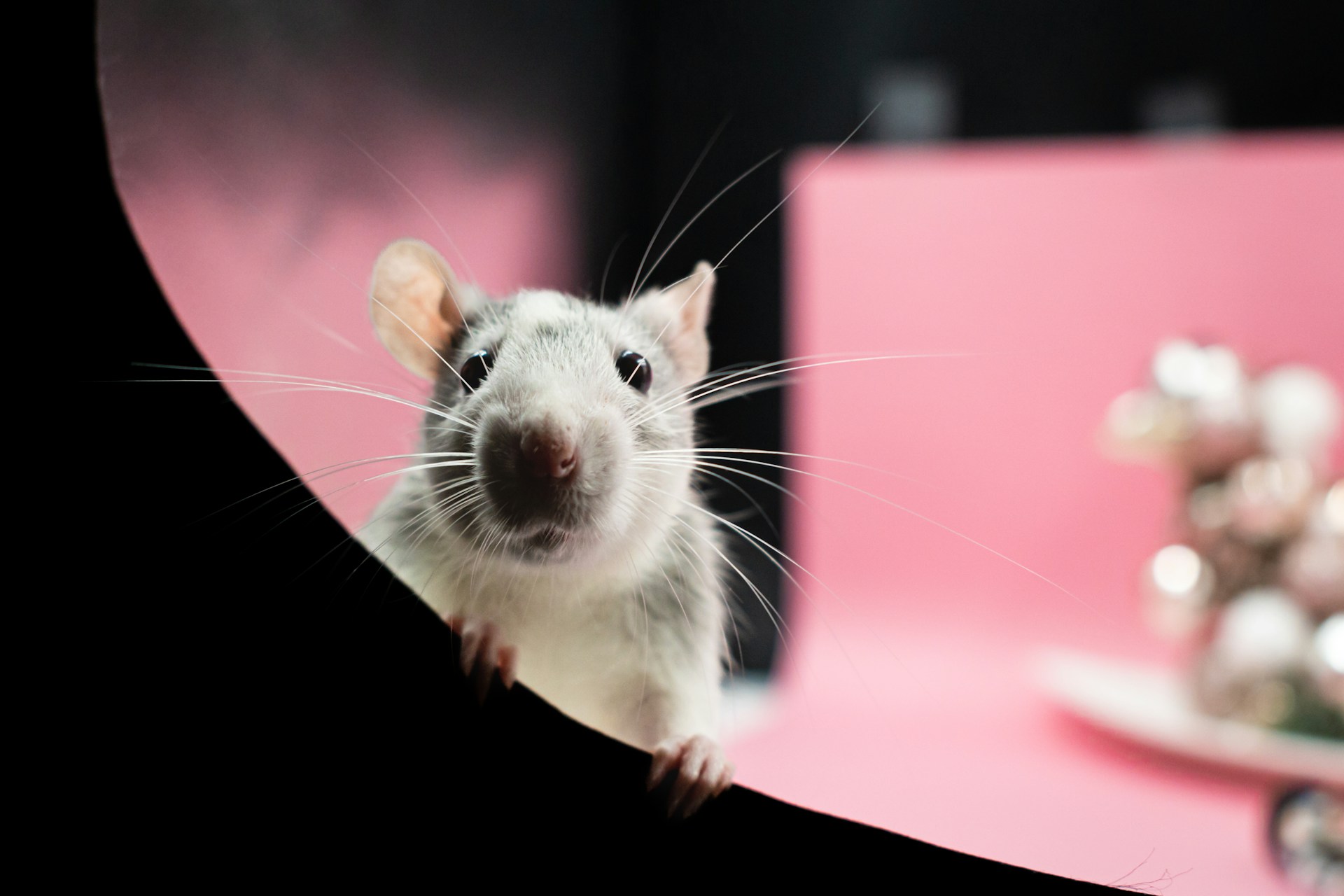Exploring HeLa’s Dual Legacy: Scientific Breakthroughs and Ethical Dilemmas. Image credit: The Oxford Scientist, adapted from Oregon State University and NIH Image Gallery, flickr, CC BY-SA 2.0, CC BY-NC 2.0.
Much like Rebecca Skloot, I learned of Henrietta Lacks in a biology class. I was in a first-year undergraduate lecture when my professor flashed a copy of The Immortal Life of Henrietta Lacks on the screen and encouraged us to read into the history of the cell line we used in our weekly labs—HeLa cells.
Years before, Henrietta Lacks’ name was mentioned in passing in a high school biology class. Rebecca Skloot paid attention but quickly learned that the world didn’t know much about the person behind the cells. Years later, she would investigate the story, and with the help of the Lacks family, The Immortal Life of Henrietta Lacks was born. The novel and accompanying film adaptation tell the harrowing story behind the first ever human immortal cell line to exist.
The story
HeLa is short for Henrietta Lacks, the person behind the cell line. Lacks received treatment for an aggressive cervical cancer at Johns Hopkins Hospital in Baltimore, Maryland in the 1950s. It was during this treatment that some of her cancerous cells were removed, and a researcher at the hospital, Dr. George Gey, recognised their high proliferative potential.
It was later found that, like other cancer cells, HeLa cells overexpressed an enzyme called telomerase. Telomerase rebuilds telomeres—the repetitive sequences at the end of chromosomes that get degraded with each cell division. Normally, when telomeres become critically shortened, a cell undergoes death. But with the overexpression of telomerase, HeLa cell telomeres never reached that critical point. The cells could divide and proliferate continuously—they were immortal. In fact, the cells still exist today, more than fifty years after they were first isolated. Prior to this discovery, the limited proliferative potential of human cells in culture was a huge limitation to scientific research. HeLa cells completely changed the game.
Prior to this discovery, the limited proliferative potential of human cells in culture was a huge limitation. HeLa cells completely changed the game.
HeLa cells contributed hugely to scientific advancement. Polio-infected HeLa cells were used to help grow this virus, ultimately aiding in the development of the polio vaccine. These cells have also helped deepen our understanding of HIV, space travel, and cancer. Not to mention they revolutionised cell culture practices. Few scientific advancements have had a bigger impact on medicine and medical research than HeLa cells.
But unlike most people who contributed significantly to the field of medicine, Henrietta Lacks was unaware of her impact. She passed shortly after her diagnosis at the age of 31, with no way of knowing that her cells would revolutionise the field of medicine. But it was not only her unfortunate passing at a young age that left her contribution unrecognised, it was also the fact that she was never asked nor informed that her cells were being used for research.
At the time that Lacks was receiving treatment for her cervical cancer, issues of informed consent were not at the forefront of medicine as they are today. That’s why, when Dr. Gey realised that a biopsy sample of cells taken from Lacks could proliferate indefinitely, there was no requirement to tell the patient that her cells would be used for medical research. In fact, this was standard at the time—many patient samples were used for research without their knowledge or consent.
But unlike most people who contributed significantly to the field of medicine, Henrietta Lacks was unaware of her impact.
The ethical issues became more apparent following Henrietta’s passing. After realising their uniqueness, Dr. Gey hoped to receive more samples of the cells. These could only be removed via autopsy, a procedure that required consent from a family member. Through manipulative techniques that wrongly claimed that an autopsy would allow the medical team to conduct tests that could help Henrietta’s children one day, Lacks’ husband agreed. Even then, they weren’t made aware that her cells were being used for medical research.
It wasn’t until 1973, over 20 years later, that Henrietta’s family became aware of the origins of the cell line. This realisation came when scientists contacted the Lacks family for blood samples for genetic studies. The family was living below the poverty line when they learned that Henrietta’s cells precipitated a multi-billion-dollar industry.
The impact
While The Immortal Life of Henrietta Lacks describes the story behind Henrietta and the HeLa cell line, it largely focuses on the cells’ impact on the Lacks family many years later. The discovery of the truth about the HeLa cell line was hard for the Lacks family to stomach—many of them were unable to make ends meet. Meanwhile, companies were making millions off the exploitation of Henrietta and her cells. The controversies around Henrietta’s story do not end there. Rather, her experience is riddled with issues of medical ethics, racism, and exploitation.
It should be stated that Henrietta was a Black woman, and at the time, there was a history of experimentation and exploitation of racial and ethnic minorities in the American medical system. Probably the most cited example of this is the Tuskegee Syphilis Study, which ran from 1932-1972. The experiment, funded by the U.S. Public Health Service, withheld life-saving treatments from hundreds of African American men with syphilis for years. Participants were not adequately compensated for their time, and coercive techniques were used to maintain their participation. Notably, Johns Hopkins advised the U.S. Public Health Service on the condemned experiment.
The discovery of the truth about the HeLa cell line was hard for the Lacks family to stomach—many of them were unable to make ends meet.
When Henrietta was a patient, Johns Hopkins was one of the few hospitals in her area that treated Black patients, highlighting the racial inequalities and segregation at the time. Her consent was never given to use the cells in medical research, and her husband was actively lied to following her death to agree to an autopsy, to the benefit of the researchers. Unfortunately, this type of exploitation was not uncommon for Black patients at the time.
The ethical concerns did not stop there. For years, following Henrietta’s death, details about her medical record were made public, due to the popularity of the cell line. Her family never consented to this public sharing of medical data, even when her entire cell genome was originally published.
Henrietta’s story represents a complete lack of medical ethics and highlights the racism and exploitation that Black patients experienced in the medical system at the time, issues that are still prevalent to this day.
Justice
In 2021 the Lacks family filed a lawsuit against Thermo Fisher Science—the company that profited off Henrietta’s cells for years. On 1 August 2023, the day Henrietta Lacks would have turned 103, her family finally reached a settlement with the company. Although details of the settlement remain unknown to the public, it represents a positive end to a decades-long battle to get justice for Henrietta.
However, the money is just one part of it. Today, Henrietta’s story is used much like that of the Tuskegee Syphilis Study—a disturbing example of the racist and unethical practices that have plagued medical research since its onset. In sharing these stories, we hope that they can serve as lessons for future generations to improve the ethical standards of medicine and research.
As for the hospital where she was treated: Johns Hopkins has a section on their website dedicated to honouring Henrietta’s legacy and recognising the role the institution played in using her cells and wrongly sharing her medical records. Plans are also in place to build a new research building at the hospital named in her honour.
In sharing these stories, we hope that they can serve as lessons for future generations to improve the ethical standards of medicine and research.
Thanks to Rebecca Skloot’s novel, many people around the world today know where HeLa cells come from and empathise with Henrietta’s family for the wrongdoing they experienced. Importantly, the world knows that the incredible medical contributions of HeLa cells would not be possible without Henrietta Lacks—something that was very important to her family. Nothing will ever make up for the hurt that was caused to the Lacks family, but Henrietta’s legacy will be cemented in history.
As for the cell line, HeLa cells are still used in labs around the world today. However, years after the cell line was produced, it was found that HeLa cells often polluted other cells in culture. Countless cell lines over the years were found to be cross contaminated by HeLa cells, due to their robust and highly proliferative nature. The discovery resulted in significant losses for industries and researchers who were affected by contaminated cells. As The Immortal Life of Henrietta Lacks reads, ‘Her cells caused millions of dollars in damage. Seems like a bit of poetic justice, doesn’t it?’





